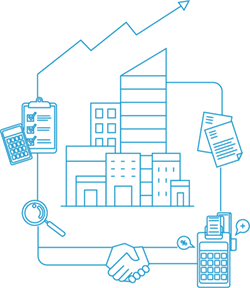In 2019/2020, bankruptcies fell to their lowest level since the 89-90 financial year. There were 12,450 bankruptcies in the last financial year, which is almost a 20% drop from the previous. But is this solely attributable to COVID? Indicators suggest not.
Firstly, bankruptcy numbers were already on the decline. In the 18-19 financial year, bankruptcies fell to their lowest level since 94-95, a drop of 8.8% when compared to 17-18.
Secondly, the annual growth rate of credit card debt was previously at a 17 year low, though recently CommSec has advised credit card use is increasing.
Furthermore, the government made temporary changes to the insolvency laws to give individuals and businesses more time to work through or consider insolvency options. These changes were recently extended to 31 December 2020, effectively stalling any bankruptcy or liquidation proceedings initiated by creditors.
Whilst only one of these indicators are specifically COVID related, and despite the low credit cards and low bankruptcy numbers; some individuals continue to struggle with meeting their repayments though there is currently no pressure to do so. Credit facilitators are reported to have become more relaxed with their granting of waivers, hardship and variation applications to individuals and businesses given the current circumstances.
What does this mean in the short term? When the use of credit cards increase as restrictions ease, and consumer confidence grows, the financial hardship will be amplified by the economic impact of COVID, especially when coupled with the high unemployment rate, reduction to JobKeeper and struggling businesses.
With a particular focus on individual business owners, when the government relief measures are lifted, many businesses will be affected. Given a lot of small business owners often use personal finances for business borrowings, including using their homes
as a guarantee, will mean they are more vulnerable. Particularly if property prices fall equity levels will be reduced, limiting the supply of finances available to be injected into a business.
How steep will the financial crisis curve be? Only time will tell. There is no comparative data to predict the effect the COVID-19 economy (“C19E”) will have. Though in recent times when the Global Financial Crisis was at its peak, in 2008/2009 financial year, 36,500 individuals filed for bankruptcy. What is also evident from the GFC data is that after a significant spike in new bankruptcies, the numbers remained high because the impact was still felt in the years following.
What can be done now? The introduced changes to insolvency law have been extending further, and will now expire on 31 December 2020. This means that individuals and business owners will have more time to consider their options. The message is clear; if someone is experiencing financial difficulty or expecting financial hardship in the future, they should seek advice early. Talk to an insolvency specialist or an accountant, to consider options and decide the best possible solution and action.
This article was republished from Central Coast Business Review. See the original article here!


